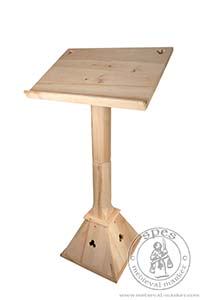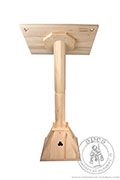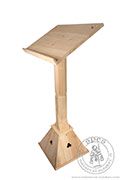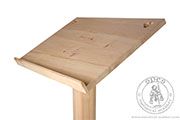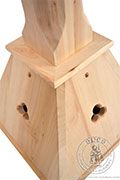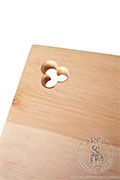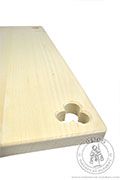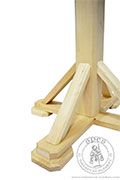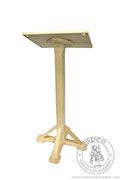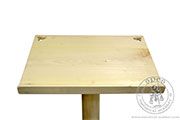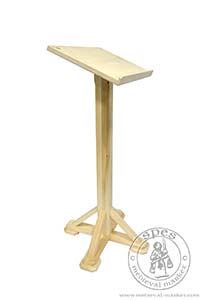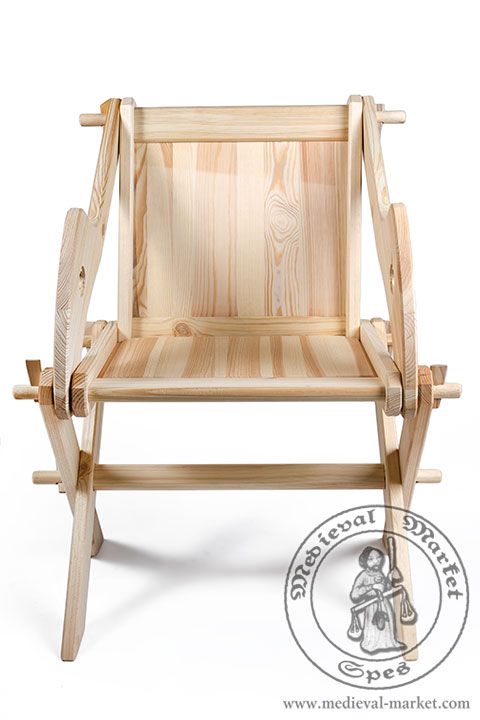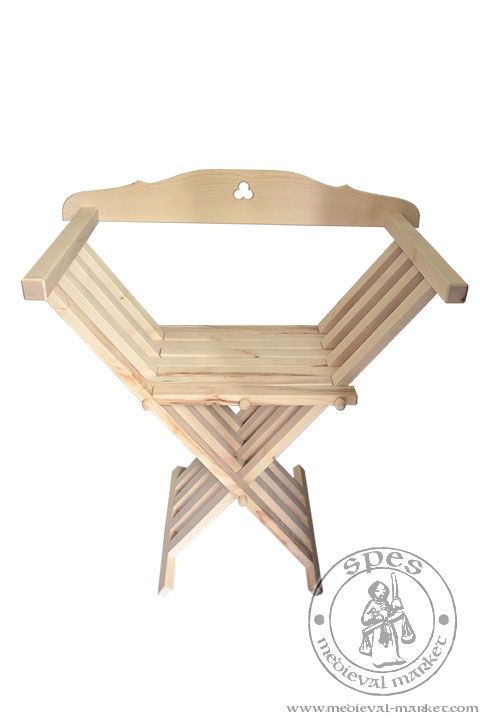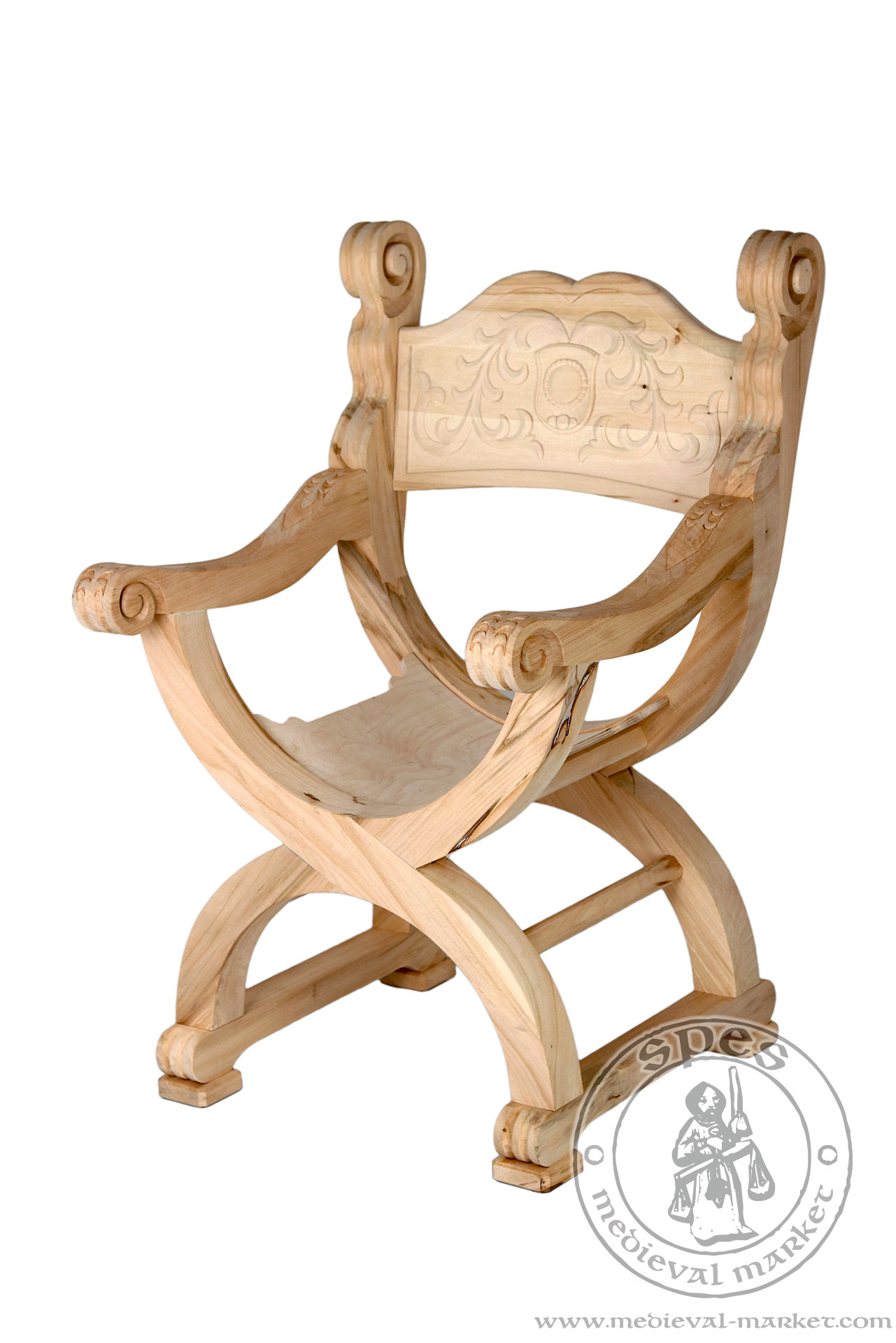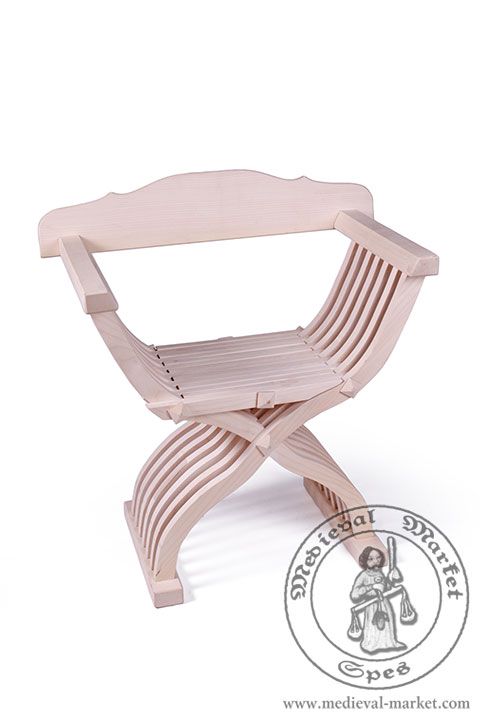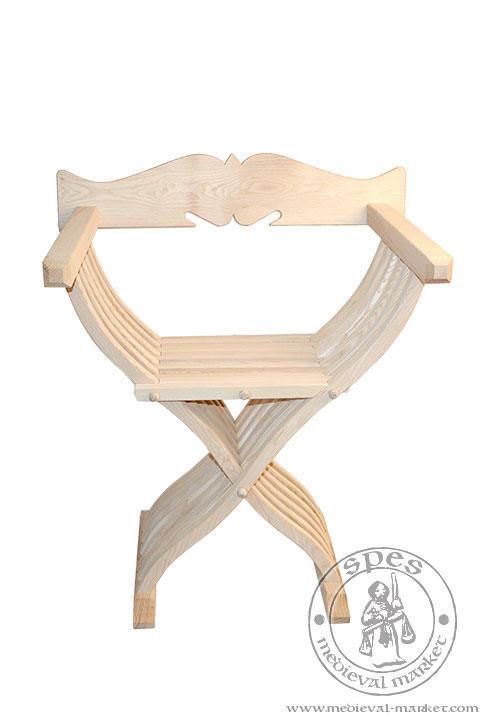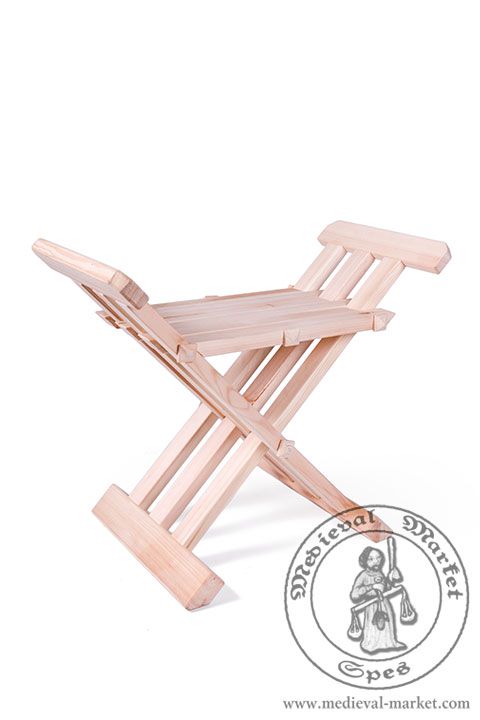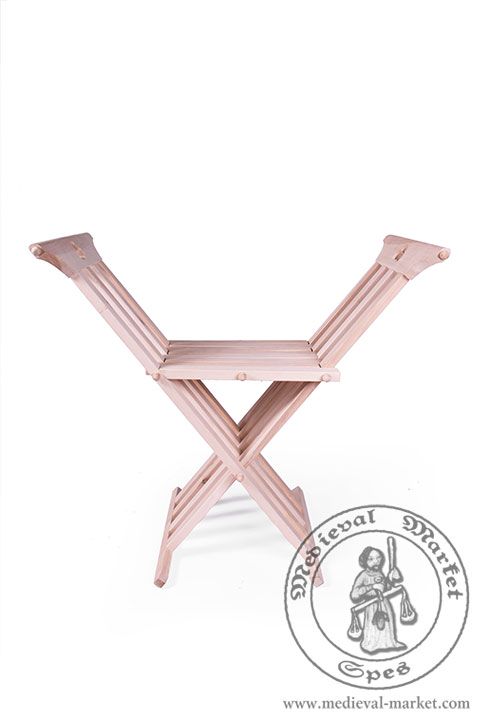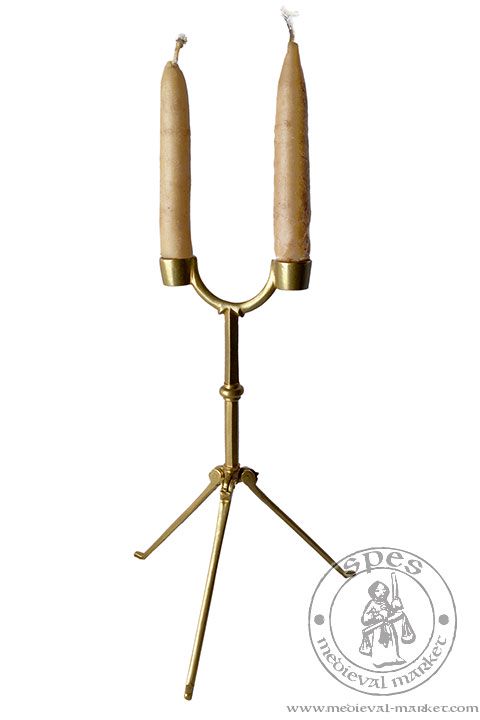If you wish to adjust your cookie preferences for this website, you can do so using your browser settings.



Category: Furniture > furniture
Scribe's lectern
Scribe's lectern
Century: XIII, XIV| CODE | Material |
Standard
|
Price | |
| MNOS1438 | Alder | Mixed | 770.00 EUR |
|
Lowest price in the last 30 days
See how to place an order for several people
Scribe’s lectern is a medieval style type of furnishing, indispensable for the process of copying books. We recommend this type of wooden bookstand to museums and to reenactors interested in the work of a copyist.
Our medieval lectern is made of alder wood. Medieval rostrum consists of two parts - leg with a stand and a dismountable slanted top. Total height of this wooden bookstand is around 130 cm. The dimensions of the reading desk are 65x45x5 cm. Angle of inclination is 30 degrees. The stand and the lectern are ornamented with gothic rosettes.
As our medieval book stand has two parts, it is easy to disassemble and transport it.
Medieval rostrum will be perfect for various presentations of scribe’s work. It can also be a central point of an exhibition presenting the process of copying books in the Middle Ages.
ATTENTION! You can order impregnation of the lectern with linen oil for a surcharge. To choose this option, write your wish in "additional information" box during placing the order. The price of impregnation is 42 euros.
Scribe’s lectern in historical sources
Scribe’s lectern can be found in numerous medieval sources, for example, on the pages of Bibble de Hambourg. It’s a richly illustrated medieval manuscript from 1255, created for the cathedral in Hamburg. Currently, it is kept in The Royal Library in Copenhagen. One of the pages presents a Benedictine monk rewriting a book on a wooden rostrum.Main features:
- made of alder wood of high quality- stable construction
- easier to transport thanks to dismountable book rest
- unique character thanks to gothic ornaments
- based on historical sources
Each written word is a wound inflicted to the devil
In the early medieval culture in Europe, especially from 6th century, rewriting books was done mainly by Benedictine monks.It was a very monotonous and complicated task. However, monks believed that every copied book helps in spreading the fight between good and evil.Monks met every day in a special room which in monasteries was called a scriptorium. It had to be a room full of light as copyists worked mainly during day. It contained a standing rostrums with angled worktops. Worktops were tilted towards a user as it was hard to use a goose quill pen on a flat, horizontal lectern.
Depending on the wealthiness of a monastery, the number of scribes differed. Usually it was around 12 of them. They worked for about 6 hours a day as the sun light was necessary in their work. Monks had various tasks but a scribe was dedicated to writing. When he finished his work, an illuminator enriched the book with ornaments such as initial decorative letters and miniatures. The scribe took his materials and tools from armarius. Once the text was ready, it was examined by a corrector.
One scribe could rewrite around 40 works during his lifetime. The process of rewriting a Bible took approx. 1 year.
A scribe used various tools. The most important ones were a properly clipped goose quill pen, an inkwell, a parchment, a pumice stone used as an eraser, and a knife. The last one could be used to scrape mistakes, to trim a parchment and to sharpen a quill.
Ink was obtained from cabbage juice, gall wasps and copper sulphate. These were boiled with acacia gum and beer or wine.
When pages were written up and arranged in a proper order, they were sewn up with ram’s strings and trimmed to one size. Such book was framed in oak or beech planks.
These were covered with leather or stiff fabric with bumps. It worked as an extra protection for the book. Ready copy had a large value so the most precious books were chained to the lecterns.
Due to the fact that our furniture is a result of craftsman's work, the measurements provided here might differ from the real ones by maximum +/- 1.5 cm.
Our medieval furniture is finished with sandpaper of 60-level grit. Therefore, in some softer spots of a piece of furniture, you may find some slight, natural wood nap which is a result of polishing. It practically disappears after impregnating the furniture with the use of natural methods such as linen oil or wax. If you plan to varnish the furniture in more contemporary way and want us to make the furniture’s surface smoother (i.e. use sandpaper of higher grit), please contact us and we will tell you the price of the option.





 Female Clothing
Female Clothing Male clothing
Male clothing Accessories
Accessories
 Tents
Tents Armament
Armament HMB Line
HMB Line Miscellaneous
Miscellaneous Rent
Rent In stock
In stock Special Offers
Special Offers Search
Search Your Account
Your Account About us
About us Sizing
Sizing How to buy
How to buy Blog
Blog Links
Links Events
Events
